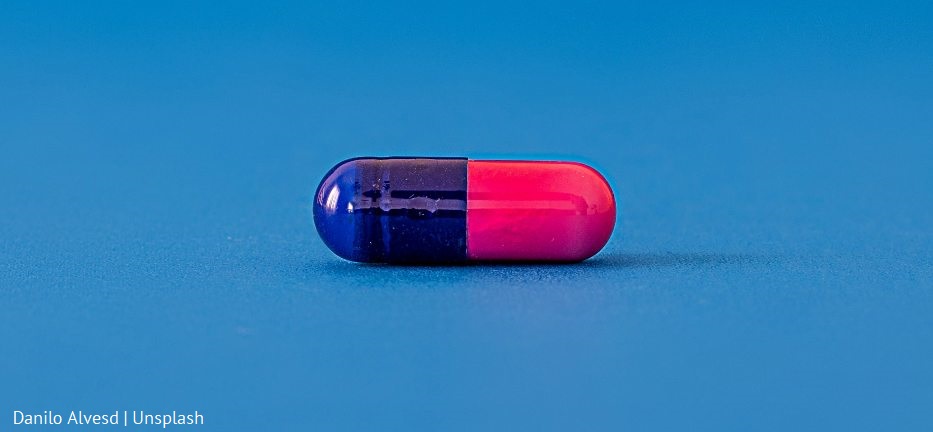Scientists from the University of Silesia in Katowice are developing modern methods for obtaining physically stable amorphous pharmaceuticals, which are more easily absorbed by the body than their equivalents in crystal form.
The article presents the results of works whose goal was to obtain and patent a highly physically stable amorphous system based on probucol – a drug applied in the therapy of cardiovascular diseases.
 |
Uniwersytet Śląski w Katowicach wspiera realizację Celów Zrównoważonego Rozwoju ONZ |
Badania naukowców z Uniwersytetu Śląskiego wpisują się w realizację Celów Zrównoważonego Rozwoju ONZ.
Cel 3 – dobre zdrowie i jakość życia
Rozwiązanie opracowane przez naukowców z Uniwersytetu Śląskiego może przyczynić się do ograniczenia jednego z najczęstszych czynników powodujących przedwczesne zgony ludzi na świecie. Opracowana mieszanina farmaceutyków stanowi bowiem interesującą propozycję dla terapii schorzeń układu sercowo-naczyniowego.
Contact
Dr Eng. Justyna Knapik-Kowalczuk | Faculty of Science and Technology – justyna.knapik-kowalczuk@us.edu.pl
|Małgorzata Kłoskowicz|
Scientists from the University of Silesia have developed an innovative, highly physically stable, amorphous pharmaceutical composition based on probucol and the method for obtaining it.
‘Recrystallisation of this from of probucol takes place even when minor compression power is applied to the drug. Therefore, it is almost impossible to produce the amorphous form of the pharmaceutical on an industrial scale. This problem was the main motivation for the scientists from the University of Silesia. We wanted to find the most possible effective method for stabilisation of amorphous probucol. Among many candidates, amorphous atorvastatin proved to be the most interesting stabiliser’, says Dr Justyna Knapik-Kowalczuk from the Faculty of Science and Technology at the University of Silesia, co-author of the patented solution.
Scientists from the University of Silesia have developed an innovative, highly physically stable, amorphous pharmaceutical composition based on probucol and the method for obtaining it.
‘Recrystallisation of this from of probucol takes place even when minor compression power is applied to the drug. Therefore, it is almost impossible to produce the amorphous form of the pharmaceutical on an industrial scale. This problem was the main motivation for the scientists from the University of Silesia. We wanted to find the most possible effective method for stabilisation of amorphous probucol. Among many candidates, amorphous atorvastatin proved to be the most interesting stabiliser’, says Dr Justyna Knapik-Kowalczuk from the Faculty of Science and Technology at the University of Silesia, co-author of the patented solution.
Probucol combined with atorvastatin can be used for conducting effective therapy of cardiovascular diseases, and its physically stable amorphous form will be more easily absorbed by the body. The solution has been covered by patent protection.
‘Pharmaceuticals in the amorphous form, contrary to their crystallic equivalents, are characterised by significantly better solubility in water. This information becomes more significant when we realise that currently over 40% of solid drugs (i.e. in the form of pills, pellets, capsules) have lower solubility than… marble. The solubility of calcium carbonate that marble is composed of amounts to 10 mg/l, whereas the solubility of atorvastatin is 0.63 mg/l. This means that the drug converted to its better soluble, amorphous form can be served to patients in a smaller dose, while maintaining its healing properties’, comments the scientist.
Moreover, in the case of amorphous substances, the risk of side effects that could occur as a result of excessive deposition of undissolved drug in small intestine villi is reduced. It is also worth mentioning the better compressibility of such systems, which allows to reduce the amount of ancillary substances present in the pill core, and consequently decrease the costs of drug production.
As we can see, amorphous pharmaceuticals have a lot of advantages both for the patient and the manufacturer. However, the problem is that they are thermodynamically unstable, which means that they easily return to their crystal form, losing the above-mentioned properties. This is why the research on their physical stability is so important.
‘In our laboratories we test pharmaceuticals not only in standard drug storage conditions, but also in the conditions imitating the process of their production. It is very significant, because we know that high pressure activity is one of the factors that may initiate an undesired crystallisation process’, as explains the physicist from the University of Silesia in Katowice.
The object of interest for the physicists was probucol. This is a biologically active substance used in treating cardiovascular diseases. In order to improve its solubility (which amounts to 0.04 mg/l), the scientists first prepared its amorphous form, and then examined its physical stability in the conditions imitating its production process. It turned out that in such an environment, precisely under the impact of compression, the examined substance immediately returned to its crystal form. For the purpose of stabilising the amorphous form of the examined drug, the authors of the invention created a mixture of two healing substances – they combined probucol with atorvastatin. It turned out that the use of both pharmaceuticals allows to increase the antiatherosclerotic activity of the drug, which becomes even more effective in combatting the cardiac diseases.
‘We have developed a pharmaceutical composition based on probucol and atorvastatin in doubly amorphous form, as well as the method of obtaining it. Such combination is characterised by high physical stability, both in standard drug storage conditions, as well as in the conditions imitating the drug production, thanks to which it will ultimately be possible to obtain a drug with better properties – bioavailable, effective in cardiac disease treatment therapies, as well as not losing its advantages during production, with particular focus on the pelletising process. That was precisely our goal and this solution was covered by patent protection’, explains the scientist.
The authors of the invention are scientists from the Faculty of Science and Technology at the University of Silesia: Prof. Marian Paluch, Dr Eng. Justyna Knapik-Kowalczuk and Dr Marzena Rams-Baron.







